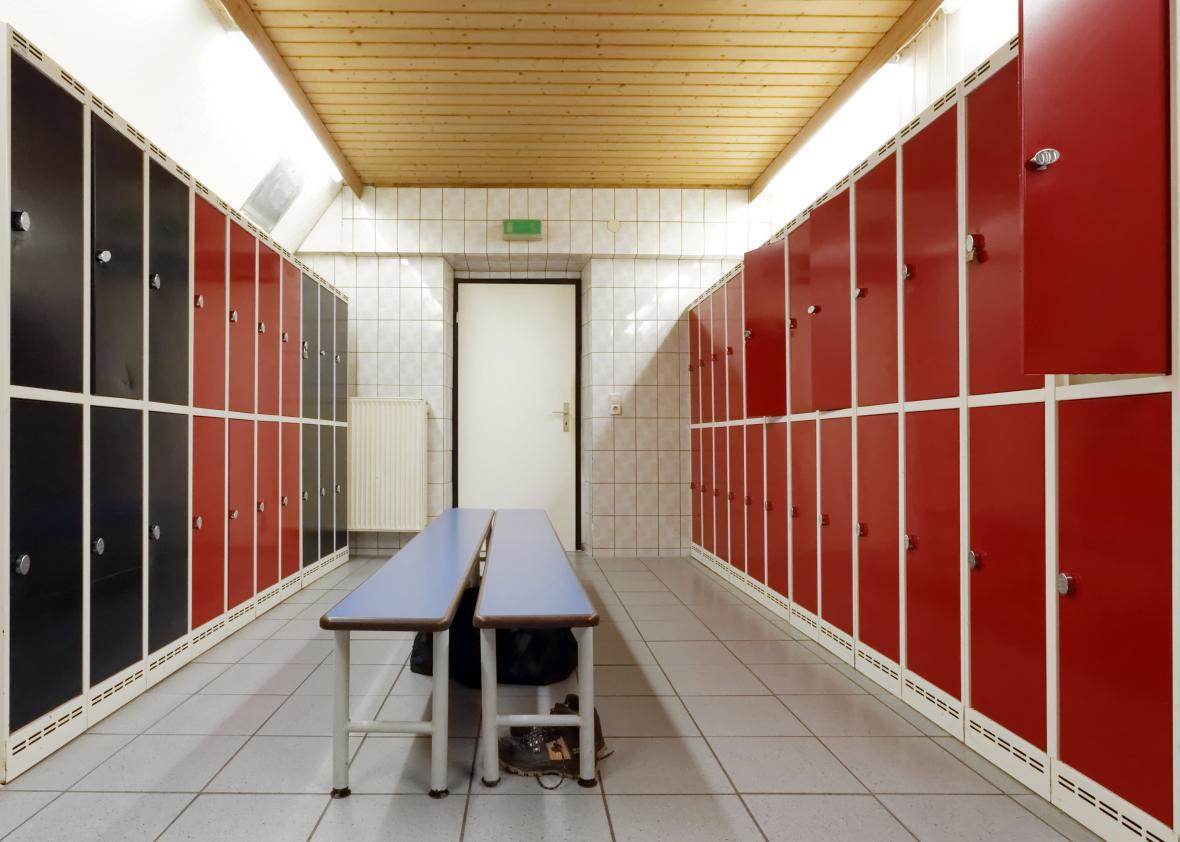Last week, the largest high-school district in Illinois finally appeared to relent on its refusal to allow a transgender student access to the girls locker room, reaching a potentially precedent-setting agreement with the U.S. Department of Education’s Office for Civil Rights.*
That deal—which gave the unnamed Student A the access to the girls locker rooms she’d been requesting for two years—appeared to be in jeopardy almost immediately, with school district officials last week accusing the OCR of publicly misrepresenting the nature of the settlement. But Monday night, after a contentious emergency meeting, the district announced that the agreement will indeed stand—despite ongoing disputes about what it actually entails.
After a nearly two-year investigation, the OCR determined last month that the Township High School District, which is based in the Chicago suburb of Palatine, was in violation of Title IX, the 1972 federal law that prohibits discrimination on the basis of sex, for denying Student A, who was born male but has identified as female for several years, access to the girls locker room. The investigation found that the school mostly respected the girl’s gender identity, except when it made her change clothes, both for mandatory physical education classes and for team sports, in a separate room or a hallway away from the girls locker rooms. From the OCR’s Nov. 2 letter to Township Superintendent Daniel Cates:
OCR finds by a preponderance of the evidence that the District is in violation of Title IX for excluding Student A from participation in and denying her the benefits of its education program, providing services to her in a different manner, subjecting her to different rules of behavior, and subjecting her to different treatment on the basis of sex.
The district was given a 30-day deadline to figure out how to accommodate the student or face enforcement, which could include losing the federal money (roughly $6 million) it receives or facing litigation. Initially, the school district was uncooperative, releasing a statement that proclaimed its intention to “protect … student privacy over [the] office of civil rights mandate.”
“At some point, we have to balance the privacy rights of 12,000 students with other particular, individual needs of another group of students,” the district’s superintendent, Daniel Cates, said, according to the Chicago Tribune. But money talks, and in the end, the school board voted to approve an agreement that allowed Student A to change in the girls locker room:
Based on Student A’s representation that she will change in private changing stations in the girls’ locker rooms, the District agrees to provide Student A access to locker room facilities designated for female students at school and to take steps to protect the privacy of its students by installing and maintaining sufficient privacy curtains (private changing stations) within the girls’ locker rooms to accommodate Student A and any students who wish to be assured of privacy while changing.
The controversy was by no means exhausted. It quickly became evident that the district and the OCR disagreed over some pretty key points, like: What happens if Student A doesn’t want to change behind a privacy curtain installed inside the locker room? Will she be kicked down the hall again? And does the agreement apply just to her, or to other transgender students in the district?
A fairly boilerplate statement made by OCR assistant secretary Catherine Lhamon—“I think this is a great day for students in the district and for students around the country to recognize that the federal government is here to support your rights”—outraged Superintendent Cates, who duly released a high-drama rebuttal:
The OCR appears to be stating to the media what they wish was in the agreement, rather than what was actually agreed upon. … It is wrong, it is an act of bad faith, and our school district will not let it stand. …
The resolution agreement’s provisions on locker room access, approved by our School Board just 36 hours ago, apply ONLY to the student who lodged the complaint. It does not apply district-wide, nor set precedent for other school districts in the country. It gives this student access to the gender-identified locker room with this student’s stated assurance that privacy curtains will be used. And, if this student doesn’t comply, access will no longer be allowed.
The OCR, which had already nixed requiring the student to retreat behind a shower-stall curtain to change, refused Cates’ demand to retract the statement, and the American Civil Liberties Union, which represented Student A, quickly addressed the other point of contention, clarifying that the “Department of Education has affirmed that District 211 must provide a safe and respectful environment for all students, including those who are transgender” (emphasis mine).
Generally, the type of “good for this day and this train only” arguments the district is trying to make have a funny way of collapsing, except in the case of Bush v. Gore, with the majority’s famous insistence that the decision be “limited to the present circumstances.” Fair enough—the discovery of hanging chads in a closely contested presidential race is not, thank God, an everyday or even an every-decade occurrence. But it’s all but inevitable that more transgender students will demand unrestricted locker room access in the future, and when that happens, the battle waged in District 211 will come up over and over again. That’s likely one of the big reasons why, at the meeting Monday night, the school district decided, to the consternation of many concerned citizens in the crowd, to honor the agreement after all.
*Correction, Dec. 8, 2015: This post originally misidentified the Department of Education’s Office for Civil Rights as the Office of Civil Rights.
